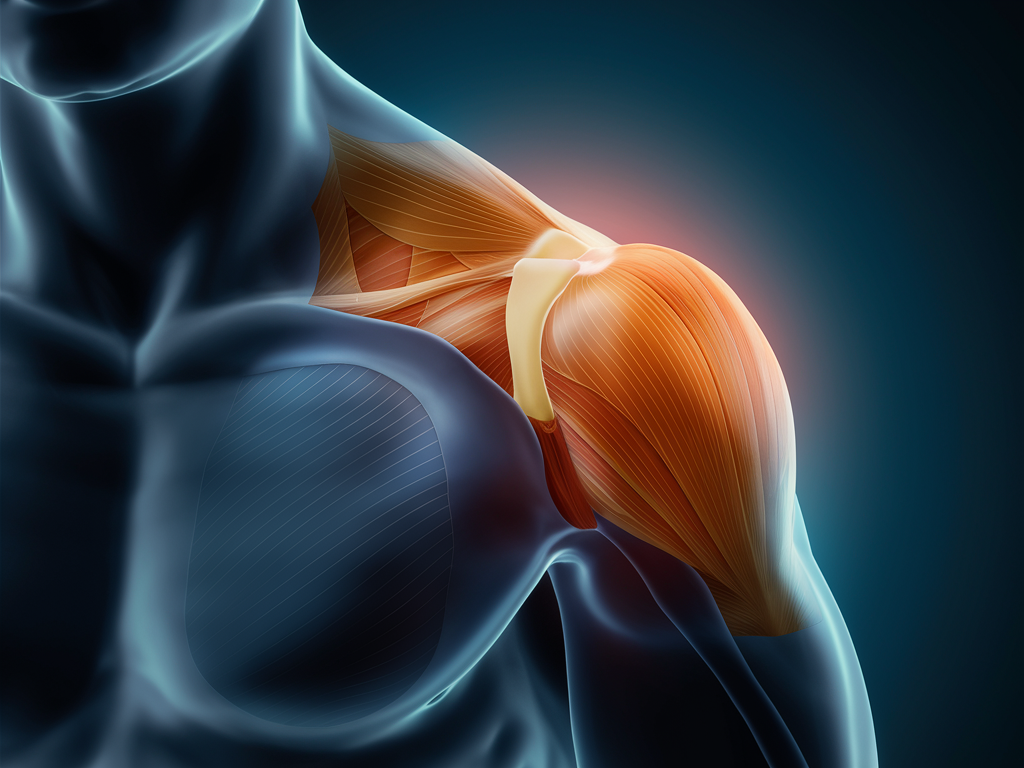Posterior deltoid development is often the missing piece in many fitness enthusiasts’ shoulder training regimens. While the front and side deltoids frequently receive ample attention, the rear delts remain undertrained, creating aesthetic imbalances and potentially contributing to shoulder issues. In this comprehensive guide, we’ll explore evidence-based strategies to build stronger, more developed rear delts while avoiding common pitfalls that hinder progress. Whether you’re looking to improve shoulder symmetry, enhance posture, or increase upper body strength, these expert tips will help you transform your posterior deltoid training approach.
Tip #1: Understand Rear Delt Anatomy and Function
The posterior deltoid, commonly called the rear delt, forms the back portion of your shoulder’s deltoid muscle group. This triangular muscle originates at the spine of your scapula (shoulder blade) and inserts into the deltoid tuberosity of the humerus (upper arm bone). Unlike the anterior (front) and lateral (side) deltoid heads that are more visible from the front, the posterior deltoid is only fully visible from behind.
Functionally, the rear delts are responsible for horizontal abduction and external rotation of the shoulder joint. They play a crucial role in pulling movements and help stabilize the shoulder during pressing exercises. Beyond aesthetics, well-developed rear delts contribute significantly to:
- Improved posture and reduced risk of shoulder hunching
- Enhanced shoulder joint stability and injury prevention
- Better balance between pushing and pulling strength
- Increased performance in compound movements like rows and pull-ups
The posterior deltoids work synergistically with other upper back muscles such as the rhomboids, infraspinatus, teres minor, and lower trapezius. Understanding these relationships is essential for effective training.
Tip #2: Master These Top 5 Rear Delt Exercises
To effectively target the posterior deltoids, you need exercises that emphasize horizontal abduction and external rotation. Here are the five most effective movements for rear delt development:
1. Face Pulls
Face pulls stand out as perhaps the best overall rear delt exercise due to their ability to target posterior deltoids while also engaging rotator cuff muscles and mid-trapezius.
Proper technique:
- Set a cable pulley at upper chest height with a rope attachment
- Grab the rope with both hands, palms facing each other
- Step back until arms are fully extended and maintain a slight bend in knees
- Pull the rope toward your face, separating your hands as you pull
- Focus on driving elbows back and up while externally rotating shoulders
- Briefly hold the contracted position before controlled release
Key tip: Avoid using momentum by keeping your torso stable throughout the movement.

2. Reverse Pec Deck Flyes
This machine-based exercise provides consistent tension through the movement arc and helps isolate the rear delts effectively.
Proper technique:
- Adjust the seat height so your shoulders align with the machine’s pivot point
- Sit facing the machine with your chest against the pad
- Grasp the handles with a neutral or pronated grip
- Initiate the movement from your shoulders, not your elbows
- Open your arms wide until you feel a strong contraction in your rear delts
- Control the return motion without letting the weight stack touch down between reps
3. Bent-Over Lateral Raises
This free-weight exercise allows you to target the rear delts with minimal equipment.
Proper technique:
- Hold a dumbbell in each hand with palms facing each other
- Hinge forward at the hips until your torso is nearly parallel to the floor
- Keep your back flat and knees slightly bent
- Allow dumbbells to hang directly beneath shoulders
- With elbows slightly bent, raise the weights out to the sides until upper arms are parallel to the floor
- Focus on using rear delts rather than traps or rhomboids
Key tip: Use lighter weights and higher repetitions to maintain proper form and target the rear delts effectively.
4. Resistance Band Pull-Aparts
This exercise is excellent for activating the rear delts without heavy equipment, making it perfect for warm-ups or high-frequency training.
Proper technique:
- Hold a resistance band at chest height with hands shoulder-width apart
- Extend arms forward with a slight bend in elbows
- Pull the band apart by driving your hands outward and slightly backward
- Focus on squeezing the shoulder blades together at the end range
- Control the return and avoid letting the tension release completely
5. Cable Rear Delt Rows
This exercise provides constant tension through a full range of motion, ideal for building mind-muscle connection.
Proper technique:
- Set a cable at chest height
- Stand sideways to the cable and grasp the handle with the hand furthest from the machine
- Step away to create tension in the cable
- Keep your arm parallel to the floor and elbow bent around 90 degrees
- Pull the cable across your body, focusing on rear delt contraction
- Control the negative portion before repeating
Tip #3: Optimize Your Training Frequency
Research suggests that the deltoids—posterior delts included—can handle and benefit from higher training frequencies than many other muscle groups. For optimal development:
- Beginners: Train rear delts 2-3 times per week with at least 24-48 hours between sessions
- Intermediate: 3-4 dedicated rear delt sessions weekly, varying intensity and volume
- Advanced: Up to 4-5 sessions weekly, with careful management of exercise selection and recovery
For effective integration into your existing routine:
- Include 1-2 dedicated rear delt exercises on pull/back days
- Add a quick rear delt movement as a warm-up before pressing exercises
- Consider dedicated rear delt “mini-sessions” (5-10 minutes) on recovery days
- Implement active recovery techniques such as band pull-aparts between pushing movements
Studies show that muscles respond best to distributed training stress rather than concentrated volume in a single session. For rear delts specifically, research published in the Journal of Strength and Conditioning Research suggests that splitting volume across multiple weekly sessions produces superior hypertrophic responses compared to performing the same volume in a single workout.
Tip #4: Focus on Mind-Muscle Connection
The posterior deltoids can be notoriously difficult to isolate and engage effectively due to their positioning and the tendency for larger surrounding muscles to dominate movements. Enhancing neural activation through mind-muscle connection techniques is therefore crucial.
Effective cues for improved rear delt engagement include:
- “Pull from your elbows, not your hands” during pulling movements
- “Lead with your little finger” during lateral raises and flye movements
- “Squeeze your shoulder blades down and together” at the peak of contraction
- “Imagine pinching a pencil between your shoulder blades”
- “Rotate your arms as if pouring water from a pitcher” during face pulls
To prevent compensation from other muscle groups:
- Use lighter weights initially while developing the connection
- Implement isometric holds at peak contraction (2-3 seconds)
- Perform initial sets with eyes closed to enhance internal focus
- Use mirrors strategically to confirm proper muscle activation
- Consider adding pre-activation exercises like prone Y-raises before heavier work
Research published in the European Journal of Applied Physiology demonstrates that focused attention on target muscles during resistance training can increase EMG activity by up to 18%, potentially enhancing muscle development and specificity of adaptation.

Tip #5: Avoid These Common Rear Delt Training Mistakes
Effective rear delt development requires avoiding several common pitfalls that can undermine your progress:
Using Excessive Weight
The posterior deltoids are relatively small muscles compared to other shoulder heads. Using too much weight typically leads to compensatory movement patterns where larger muscles like the trapezius, rhomboids, or even biceps take over. Focus on moderate weights where you can feel distinct rear delt activation.
Training Rear Delts as an Afterthought
Many lifters place rear delt exercises at the end of workouts when energy and focus are diminished. Consider occasionally prioritizing rear delts by training them earlier in your workout when you’re fresh and can apply maximal effort and concentration.
Insufficient Training Volume
Studies suggest that posterior deltoids may require higher training volumes than front delts for equivalent development. Aim for 10-16 weekly sets of direct rear delt work, divided across multiple sessions. For those with significant imbalances, temporary increases to 16-20 weekly sets may be appropriate during specialization phases.
Improper Exercise Execution
Common technique errors include:
- Initiating movements with biceps rather than shoulder muscles
- Using excessive range of motion that shifts tension away from rear delts
- Allowing wrists to flex or extend during movements
- Hunching shoulders toward ears rather than retracting scapulae
- Rushing through eccentric (lowering) portions of exercises
Neglecting Progressive Overload
Without systematic progression, rear delts adapt quickly and stall in development. Track your training carefully and ensure progress through:
- Gradual weight increases when form allows
- Additional repetitions with the same weight
- Decreased rest periods between sets
- Increased time under tension via slower tempos
- Additional weekly sets or training frequency
Tip #6: Incorporate Strategic Rep Ranges and Tempo
Research indicates that the posterior deltoids contain a mixed composition of muscle fiber types, with a slightly higher proportion of slow-twitch fibers compared to the anterior deltoid. This suggests that rear delts may respond particularly well to varied repetition ranges and strategic tempo manipulation.
Optimal rep ranges include:
- Strength foundation: 6-8 reps with heavier loads (1-2 exercises per week)
- Hypertrophy focus: 10-15 reps with moderate loads (majority of training)
- Metabolic/endurance work: 15-25 reps with lighter loads (1-2 exercises per week)
Effective tempo strategies:
- Standard tempo (moderate): 2-0-2-0 (2 seconds down, no pause, 2 seconds up, no pause)
- Eccentric emphasis: 4-1-1-0 (4 seconds down, 1 second pause, 1 second up, no pause)
- Isometric focus: 2-3-1-0 (2 seconds down, 3 second hold at peak contraction, 1 second up, no pause)
- Continuous tension: 3-0-3-0 with no lockout at bottom position
For optimal results, consider performing 3-4 sets per exercise and incorporate a variety of these timing protocols rather than sticking exclusively to one approach. Research published in the International Journal of Sports Medicine suggests that varying tempo strategies may enhance muscle fiber recruitment patterns and potentially stimulate greater adaptations over time.
Tip #7: Implement Advanced Training Techniques
Once you’ve established a solid foundation of rear delt development, incorporating advanced techniques can help break through plateaus and stimulate new growth:
Drop Sets
Particularly effective with machine exercises like reverse pec deck:
- Perform a set to near failure with your working weight
- Immediately reduce weight by 20-30% and continue for additional repetitions
- Optionally, reduce weight a second time for a triple drop set
- Limit to 1-2 exercises per workout to prevent excessive fatigue
Pre-Exhaustion Methods
This technique involves performing an isolation exercise for rear delts immediately before a compound movement:
- Perform 12-15 reps of bent-over lateral raises
- Without rest, immediately perform 8-12 reps of seated rows with emphasis on rear delt contraction
- The pre-fatigued rear delts will receive enhanced stimulus during the compound exercise
Mechanical Drop Sets
This advanced technique utilizes exercise mechanics rather than weight changes:
- Start with the most challenging variation of an exercise (e.g., wide-grip face pulls)
- When reaching failure, immediately switch to a mechanically advantageous variation (e.g., narrower grip face pulls)
- Continue until reaching failure with the second variation
Isometric Holds
Strategic isometrics can enhance neural drive and time under tension:
- Incorporate 5-10 second holds at peak contraction during the final rep of each set
- Perform pure isometric holds using bands or cables at different joint angles
- Use “loaded stretches” by holding the lengthened position for 15-30 seconds
When implementing these advanced techniques, limit their use to 4-6 week specialization phases followed by a return to more conventional training approaches. Research published in the Journal of Sports Science & Medicine suggests cycling between traditional and advanced training methods produces superior long-term results compared to consistently using either approach in isolation.
Tip #8: Ensure Proper Shoulder Balance in Your Program
Balanced shoulder development is crucial not only for aesthetics but also for functional strength and injury prevention. Many lifters unknowingly maintain training programs that heavily favor anterior deltoid development through pressing movements while neglecting posterior work.
For optimal shoulder balance and development, research suggests following these ratios:
- Volume ratio: 1:1:1.5 (front:side:rear delts)
- Total sets per week: 8-10 sets for front delts, 8-10 sets for side delts, 12-16 sets for rear delts
To assess your current deltoid balance:
- Evaluate your shoulder appearance from multiple angles using photos
- Note visible development discrepancies between deltoid heads
- Analyze your program for total volume dedicated to each deltoid region
- Consider strength ratios between pressing and pulling movements
- Assess posture for signs of anterior dominance (rounded shoulders)
For those with significant imbalances favoring front delts, consider:
- Temporarily reducing direct anterior deltoid work
- Doubling rear deltoid training volume for 8-12 weeks
- Implementing daily band pull-aparts (3-4 sets of 15-20 reps)
- Adding rear delt activation exercises before all upper body training
- Focusing on postural correction throughout the day
Remember that many compound exercises like bench press, shoulder press, and dips already provide significant anterior deltoid stimulation, meaning that front delts often receive adequate training even without dedicated isolation work.

Tip #9: Optimize Recovery and Nutrition for Shoulder Growth
Effective deltoid development depends not only on training stimulus but also on optimized recovery and nutritional support. The shoulder complex contains numerous small muscles with dense networks of connective tissue, requiring specific attention to recovery protocols.
Key nutritional considerations include:
- Protein intake: 1.6-2.2g per kg of bodyweight daily, with 20-40g consumed within 2 hours post-training
- Collagen support: 15-20g collagen protein with 50-100mg vitamin C 30-60 minutes before shoulder training to support connective tissue health
- Anti-inflammatory nutrients: Omega-3 fatty acids (2-3g daily), turmeric/curcumin, and antioxidant-rich foods to manage training-induced inflammation
- Micronutrients: Adequate zinc, magnesium, and vitamin D for optimal hormone production and muscle recovery
Effective recovery modalities:
- Strategic mobility work: Daily thoracic spine and scapular mobility exercises
- Self-myofascial release: Targeted foam rolling or massage ball work for upper back, rotator cuff, and pectoral regions
- Contrast therapy: Alternating hot and cold exposure to improve blood flow and reduce inflammation
- Active recovery: Light band work on rest days to promote blood flow without adding training stress
Research published in the International Journal of Sports Nutrition and Exercise Metabolism demonstrates that sleep quality significantly impacts muscle recovery and growth hormone secretion. For optimal shoulder development:
- Prioritize 7-9 hours of quality sleep nightly
- Establish consistent sleep and wake times
- Create a sleep-conducive environment (cool, dark, quiet)
- Limit screen exposure in the hour before bedtime
- Consider sleep-supporting supplements like magnesium glycinate or theanine if needed
Hydration also plays a crucial role in shoulder health, as the joint relies on synovial fluid for cushioning and nutrition. Aim for a minimum of 3-4 liters of water daily, increasing intake surrounding training sessions.
Tip #10: Track Progress and Adjust Accordingly
Systematic progress tracking is essential for optimizing rear deltoid development. Unlike larger muscle groups where visual changes may be readily apparent, posterior deltoid improvements can be subtle and require objective measurement approaches.
Effective tracking methods include:
- Visual documentation: Standardized photos taken from rear and side angles every 4-6 weeks
- Performance metrics: Tracking weights, reps, and perceived exertion for key rear delt exercises
- Circumference measurements: Weekly or biweekly shoulder measurements taken at consistent locations
- Movement quality assessment: Evaluating range of motion and control in horizontal abduction and external rotation
- Subjective mind-muscle connection rating: Scoring connection quality on a 1-10 scale after each exercise
Signs your program is working effectively include:
- Increased mind-muscle connection and activation awareness
- Progressive strength improvements in target rep ranges
- Greater resistance to fatigue during workouts
- Visual improvements in rear deltoid development and overall shoulder symmetry
- Enhanced posture and reduced tendency toward shoulder internal rotation
When to make program adjustments:
- After 3-4 weeks of stalled progress despite consistent training
- When exercises no longer produce the “burning” sensation of effective activation
- If shoulder discomfort or impingement symptoms develop
- Following 8-12 weeks on any single program (principle of diminishing returns)
Research supports a periodized approach to rear deltoid training, alternating between phases emphasizing different variables:
- Accumulation phase: Higher volume, moderate intensity (4-6 weeks)
- Intensification phase: Lower volume, higher intensity (3-4 weeks)
- Specialization phase: Increased frequency, varied techniques (2-3 weeks)
- Deload phase: Reduced volume and intensity for recovery (1 week)
This cyclical approach helps prevent adaptation plateaus while managing fatigue and recovery demands.
Conclusion
Developing powerful, well-defined posterior deltoids requires a multifaceted approach that goes beyond simply adding a few sets of rear delt flyes to your routine. By understanding rear delt anatomy, mastering key exercises, optimizing training frequency, and implementing the advanced strategies outlined in this guide, you can transform this often-neglected muscle group into a standout feature of your physique.
Remember that rear delt development, like all aspects of physique enhancement, responds best to consistency and patience. The posterior deltoids may require more dedicated attention than other muscle groups due to their biomechanical disadvantages and common undertraining, but the aesthetic and functional rewards of well-developed rear delts are well worth the effort.
Take a critical look at your current shoulder training approach and implement these evidence-based strategies to create balanced, powerful shoulders that look impressive from every angle. Your posture, shoulder health, and overall upper body aesthetics will all benefit from the increased attention to this crucial muscle group.

